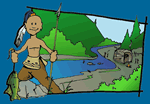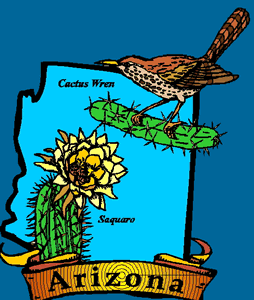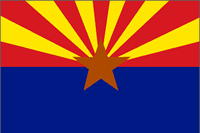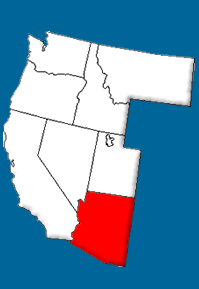


Geography and Landforms:
Arizona consists of two major land regions - the Colorado Plateau to the north, and the Basin and Range Region to the south.
|
 History:
The first white man to enter the Arizona region was a Franciscan friar, Marcos de Niza, who passed through the San Pedro Valley on 1539. He was searching for the great wealth of the Seven Cities of Cibola. One year later, Francisco Vasquez del Coronado led a group of explorers from Mexico in a search for these legendary cities of gold. His expedition visited several Indian villages and reached as far as the Grand Canyon.
|
 Economy:
Manufacturing is Arizona's leading economic activity. The state produces electronics, published materials, processed foods and items for the aerospace and transportation industries. In this rapidly growing state, construction, communications, and technology are important contributors to the economy.
|
 First Inhabitants:
Native Americas inhabited the area that is now Arizona many thousands of years before Europeans came to the region. The earliest settlements were those of the Hohokam, Anasazi, and Mogollon.
|
Books Related To ArizonaThe Hebrew Kid and the Apache Maiden - Robert Avrech Coyote School News - Joan Sandin Crossing the Wire - Will Hobbs Everybody Sees the Ants - A.S. King G is for Grand Canyon: An Arizona Alphabet - Barbara Gowan The Homework Machine - Dan Gutman Missing on Superstition Mountain - Elise Broach Stargirl - Jerry Spinelli Weedflower - Cynthia Kadohata |
Famous Citizens:
|
| Capital: | Phoenix |
| Entered Union: | February 14, 1912 |
| Population: | 6,731,484 |
| Area | 113,998 |
| Bird | Cactus Wren |
| Flower | Saguaro Cactus Blossom |
| Nickname: | The Grand Canyon State, Copper State |
| Governor | Doug Ducey |
Places to Visit in Arizona: (Click the links to learn more.)
|



